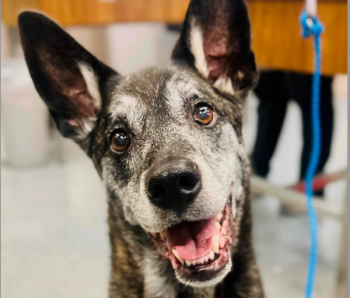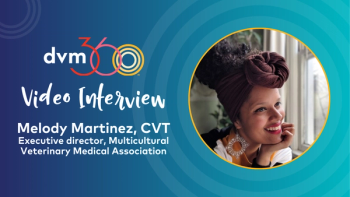
The long walk to goodbye
Whether I'm helping pets heal or helping their owners say goodbye, my job in veterinary oncology brings special patients and their families into my life who remind me why I love pets-and my work.
"How sad," people often say when I tell them I'm a technician in veterinary oncology. But honestly, I disagree. I enjoy the company of between five and 10 dogs running around our office at the University of Minnesota Veterinary Medical Center every day. Ask these dogs if they have cancer and they're bound to jump up and lick your face, sure you just told them how cute they are.
Photo by Matt Mead/mmeadx@gmail.com
Our patients visit weekly or every two or three weeks, depending on their prescribed treatment protocol. And their experience at the university is designed more like day care than treatment in a human hospital. We draw our patients' blood in the morning and give lots of kisses afterwards. Then technicians, clinicians, and veterinary students examine the patients, which we've convinced the dogs is the massage portion of their day. Their chemotherapy treatment takes place in a quiet room with two technicians and the latest girl talk.
Throughout the day, our canine patients hang out in our office together and happily romp around outside during play time. There's always a quiet spot under a desk if a patient needs a place to sleep and a time-out spot if a patient isn't playing well with others. What could be better than that?
Cody's grand entrance
Cody, a 6-year-old golden retriever, had enlarged peripheral lymph nodes. His veterinarian diagnosed him with lymphoma and referred him to the veterinary oncology department at the university for chemotherapy treatment.
The first time I met Cody, he was waiting for his first chemotherapy treatment in the reception area outside our office—and growling loudly. From inside the room, the other technicians and I heard Cody and groaned. An aggressive dog can be challenging to manage during chemotherapy treatment. But our worry turned to admiration once we met Cody. Despite his first impression, he was pleasant and handsome.
Guard dog in disguise
Cody became one of our regulars, visiting weekly for chemotherapy treatments. He was an angel with people and other dogs. But when the three other oncology technicians and I would return Cody to his mom at the end of the day, he would turn and growl at us or anyone else who came near her. Cody took his protective responsibilities seriously.
As Cody continued to visit for treatment, he grew to love us as much as we loved him. He began to protect us as he did his own mom, growling if another team member or a student approached us in the hallway. But Cody knew the rules: no growling or snapping at other dogs—and no peeing on the floor. And he knew had to follow them if he wanted to stay in the office and play.
Cody loved visiting us at our office. He'd wear his best face and race out of the wards to the oncology office door. You could tell when the other dogs annoyed him, but he tried hard to get along. Still, he sometimes snuck in a growl at another dog when he thought we weren't looking, which earned him a time-out until he could behave.
The longest walk
During the next 10 months, Cody underwent two combined chemotherapy protocols, with a brief remission in between rounds of treatment. Around the time Cody was scheduled to finish his second protocol, he fell ill. He tried hard to wag his tail when we visited him in the intensive care unit. When supportive care didn't help, additional diagnostics proved the cancer had spread to other areas, including his gastrointestinal tract.
Cody's mom decided he had experienced enough treatment already. He had gained additional months with a good quality of life and made lots of friends. Now it would be OK to let him go.
The day he was scheduled to be euthanized, we brought Cody from the intensive care unit to the oncology office so he could hang out with his oncology girls for a while. Cody's mom joined us for our last visit together. I can't imagine how difficult it was for Cody's mom as we walked her beloved dog down the long hallway to the comfort room, the place where she'd lose her friend. My heart broke for her. We sat in the comfort room for about two hours and told stories about Cody and petted our friend. Cody's mom was grateful that we loved him so dearly and took the time to appreciate him one last time.
As hard as it was to say goodbye to Cody, I'll never forget a special moment on that last long walk down the hall to the comfort room. Cody's mom was holding his leash, and the three other oncology technicians and I carried the fluid lines. Cody was weak, but in one final moment of glory, he stopped to growl at a dog passing us in the hall. He had one final opportunity to protect his mom and his four oncology technicians—his girls.
Michelle Miller
Michelle Miller, BS, CVT, is a technician at the University of Minnesota Veterinary Medical Center VeterÂinary Oncology DeÂpartment in St. Paul, Minn. Please send questions or comments to
Newsletter
From exam room tips to practice management insights, get trusted veterinary news delivered straight to your inbox—subscribe to dvm360.






